 Image search results - "shore" Image search results - "shore" |
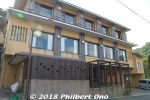
This is Shorenkan Yoshinoya (昭恋館よ志のや), a hot spring ryokan on the Tango Peninsula (Kyotango). Founded in 1928, it has 11 guest rooms.
|
|
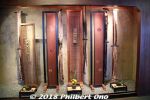
Lobby entrance.
|
|
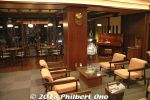
Lobby
|
|
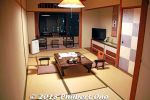
Nice Japanese-style room.
|
|
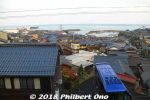
View from my room.
|
|
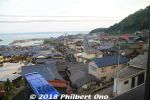
View from my room.
|
|
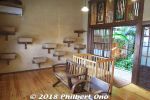
This is the dressing room for the bath named "Shoren-no-Yu" (昭恋の湯). (“Shoren” means “Love of the Showa Period.” And “Yu” means hot spring water.)The ryokan had two hot spring baths, and both were designed by an American.
|
|
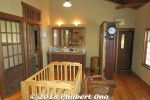
Dressing room.
|
|
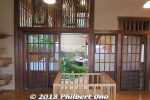
Entrance to the bath area.
|
|
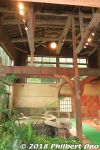
The "Shoren-no-Yu" (昭恋の湯) bath was originally an abandoned building that was renovated into a bath with a high ceiling and garden. Most everything was designed by Alexander Wilds and his artist wife Yukiko Oka. Wilds is an American sculptor from New Orleans living in Japan since 1985. He currently teaches art at Yamanashi Gakuin University in Kofu, Yamanashi Prefecture.
|
|
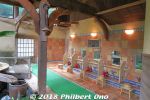
For Shoren-no-Yu, Alexander Wilds and his artist wife Yukiko Oka designed and built most everything including the garden. The shelves in the dressing room were made by his friend. Stained glass was made by his mother. Ceramic tiles are Mexican, leftover from a previous project of his. The bathhouse was originally an abandoned house which he stripped.
|
|
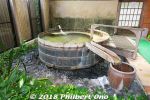
Since the ryokan celebrates the Showa Period (implied by the name "Shorenkan"), he aimed to make the bath have a Showa/Taisho Period feel. It was a tough job because they had to haul everything in and out manually. No accessible road so they had to roll the wooden barrel tub to the building manually (it couldn’t be rectangular). This bath was built during June to Oct. 2003.
|
|
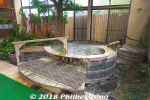
The bath in a wooden barrel. They allowed men and women to use this bath on alternate days.http://alexanderwilds-japan.blogspot.com/2017/12/alexander-wilds-architecture-yoshinoya.html
|
|
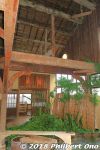
Facing the bath's garden area.
|
|
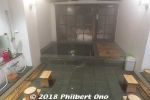
This is the other bath named “Vidro-no-Yu” (ビードロの湯) and also designed by Alexander Wilds and his artist wife Yukiko Oka. The indoor part. The glass windows were a design highlight (hard to see because of the steam and dark night). The glass door opens to a balcony with a bath.
|
|
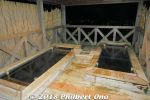
Outdoor baths on the balcony. It was night so I couldn't see the scenery. But it was great that we could try these two different baths during our overnight stay.
|
|
|
|
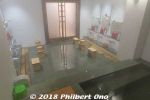
Indoor bathing area.
|
|
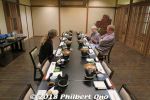
Dining room.
|
|
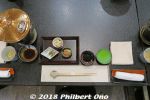
Dinner started with this.
|
|
|
|
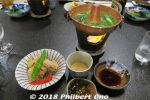
Shorenkan Yoshinoya ryokan is probably more famous for its food, especially crab during crab season (Nov. to March). But it wasn't crab season when we were there so we didn't have any crab. But the food was still excellent. Kyotango, Kyoto Prefecture.
|
|
|
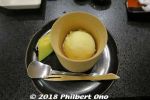
Yuzu sherbet. Yummy!
|
|
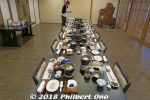
Breakfast.
|
|
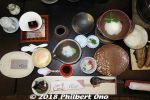
BreakfastShorenkan Yoshinoya Map: https://goo.gl/maps/hAHehEVDsft
http://taiza.jp/en/
|
|
|
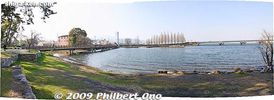
Lakeside at Zeze Castle Park.
|
|
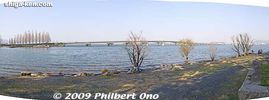
Lakeside at Zeze Castle Park with Omi Ohashi Bridge in the distance.
|
|
|
|

Gift coupons in exchange for black bass and blue gill fish. If you catch a non-native fish like black bass and blue gill fish in the lake, don't throw it back into the lake. This was at Zeze Castle park.
|
|

Walking path along Zeze Castle Park.
|
|
|

Local community center designed after Zeze Castle.
|
|

Adogawa also has a shoreline road and cycling road. This is how it looks. Entering Adogawa from Shin-Asahi.
|
|
|
|

Adogawa River
|
|
|
|
|
|

Kamo River empties into Lake Biwa.
|
|
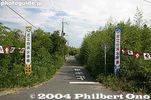
Entrance to Omi-Shirahama Beach
|
|
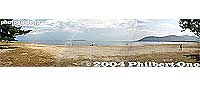
Omi-Shirahama Beach on Lake Biwa. MAP
|
|

Rocky shore
|
|

Windsor Hotel in the distance.
|
|

The water is very transparent.
|
|

Shirahige-no-Hama Beach in Takashima. I know they did some filming here for the NHK Taiga Drama "Go" where she rides on horseback. 白ひげの浜
|
|

Shirahige-no-Hama Beach and Lake Biwa in Takashima, Shiga Prefecture.
|
|
|
|
|
|
|
|
|

Entrance to Haginohama Beach. 萩の浜
|
|
|
|

A small stream empties into Lake Biwa through Haginohama Beach. Numerous streams and rivers like this one feed water to the lake.
|
|

A small stream empties through Haginohama Beach
|
|

Haginohama Beach in Takashima.
|
|
|
|
|

River mouth
|
|

There was a green belt called Kamogawa Katsuno Enchi. It was basically a beach park.
|
|

Kamogawa Katsuno Enchi park in Takashima. 鴨川勝野園地
|
|
|
|

The sand is not as nice.
|
|
|
|

This is close to Haginohama Beach.
|
|

How the lake was formed.
|
|

Northern Lake Toya
|
|

Pier
|
|

Reeds barely grow here.
|
|

Kannonzaki Park juts into Uraga Channel, the mouth of Tokyo Bay. It is a large park on a cape with walking paths and a lighthouse. 観音崎公園
|
|

Kannonzaki Park
|
|

The shore is rocky.
|
|

Lots of ships pass by here.
|
|
|

Cape Kannonzaki is at the tip closest to Uraga Channel, the narrow mouth of Tokyo Bay. Ships must pass through here to enter or depart Tokyo Bay.
|
|

Container ships, oil tankers, passenger ships, navy ships, etc., all pass through here. Anybody have a picture of an aircraft carrier passing by here?
|
|

If you like ship watching, come to Kannonzaki. This is the Nippon Maru cruise ship. にっぽん丸豪華クルーズ船
|
|

Lookout point at Kannonzaki Park.
|
|
|

Looks like the devil's washboard.
|
|
|

Walking path around Kannonzaki.
|
|

Types of ships that pass by.
|
|

Map of Kannonzaki drawn by Commodore Perry when he first arrived in 1853.
|
|
|

Kurihama in the distance.
|
|
|

More ships
|
|

Kurihama in the distance.
|
|
|
|

Tatara-hama Beach
|
|
|
|
|
|
|